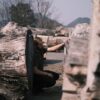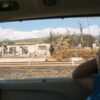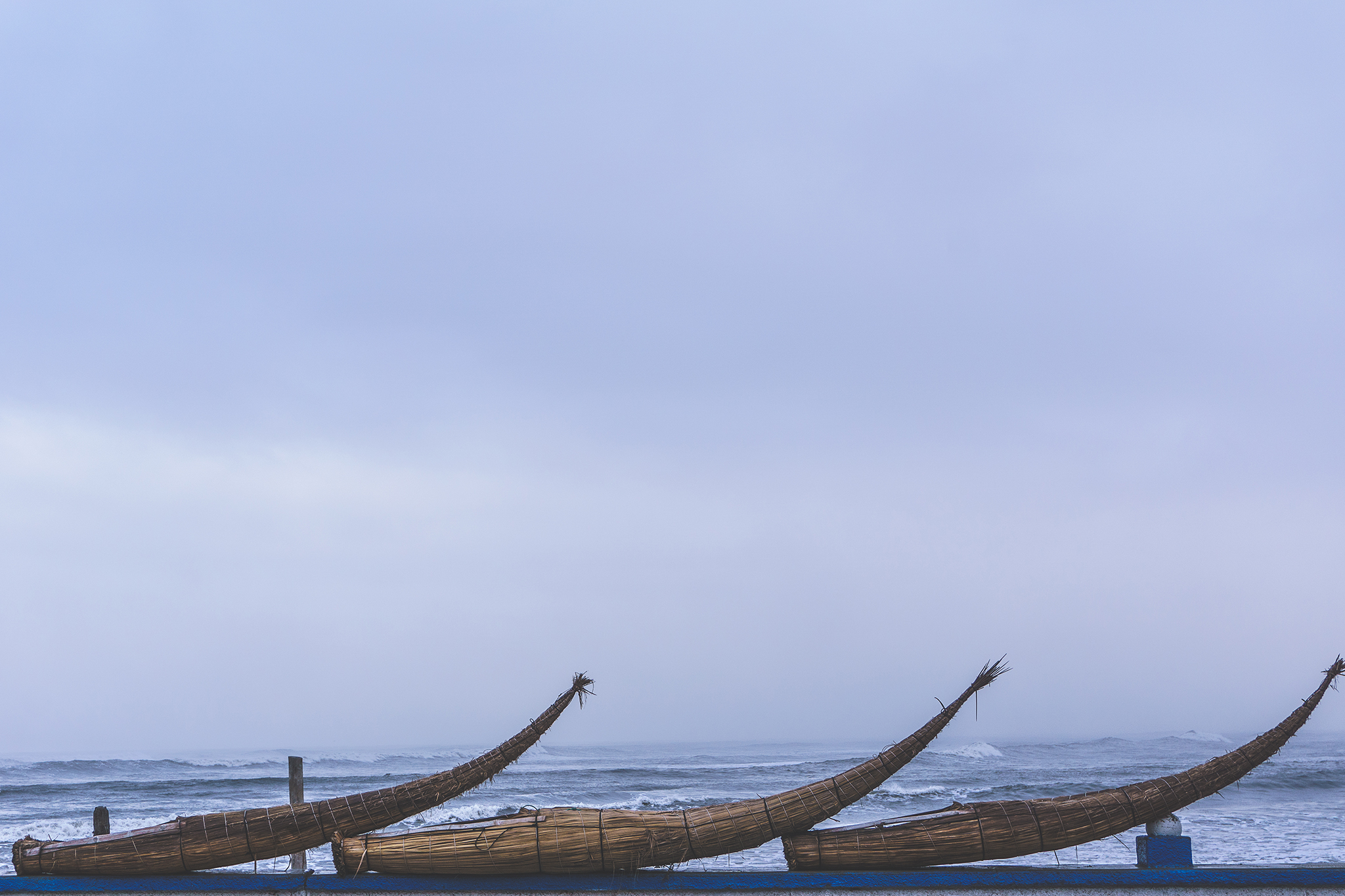Text by Tony Dunnell
Images by Mia Spingola
Standing on the malecón, Lima’s clifftop coastal path, it’s hard to know where to look. Beneath the flat, gray sky that typically covers the Peruvian capital, the world is a swirl of colors. People walk dogs of all shapes and sizes, young lovers lounge on manicured park lawns, cyclists and skateboarders slide by as paragliders hang on thermals forced up by the cliffs.
Down below, Lima’s beaches, dotted with swimmers and sunbathers, curve along the coastline and disappear into the haze. Out to sea, fishing boats bring in their catch. And between the two, plying the waves, are the tiny shapes of surfers. Locals, mainly, but foreigners, too, some of whom will have traveled to Peru specifically for the surf. It is, after all, one of the world’s greatest surfing destinations.
Lima, Peru’s vast metropolitan capital, was founded in 1535 by the Spanish conquistador Francisco Pizarro. The site was chosen because of the bay, where a port was built to ship the riches of the New World—including Inca gold—back to the Old.
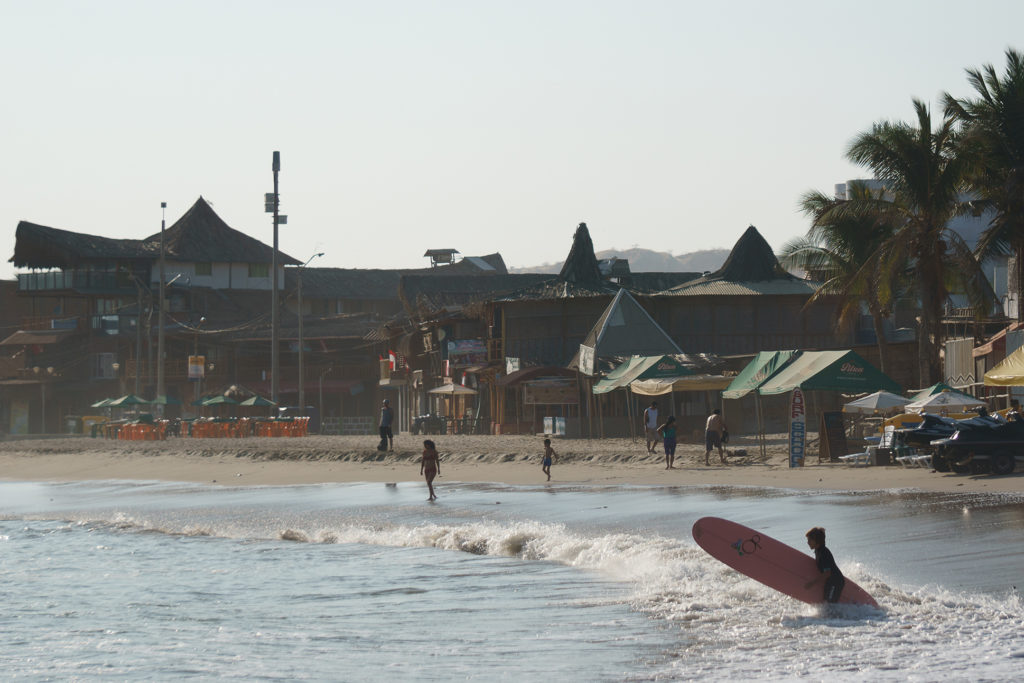
Once the country’s modern boundaries were drawn, Lima found itself at the midpoint of Peru’s 1,600-mile desert coastline. The capital is the gateway into Peru, and most international tourists fly in to Lima before heading to the southern half of the country, to popular destinations such as Nazca, Arequipa, Lake Titicaca, and Peru’s crowning jewel, Machu Picchu (via Cusco).
Surfers, meanwhile, often head in the other direction. Lima itself has quality surf spots, including the point break at La Herradura, the impressive swell at Punta Rocas, and some of the biggest waves in South America at Pico Alto.
Beyond Lima, however, there’s the draw of the less-frequented north coast, a surfer’s paradise that boasts adventure, endless beaches, the world’s longest wave, and—perhaps—a history of wave riding that predates surfing’s more commonly accepted origins in Polynesia.
Trujillo and Moche territory
Dust kicks up around the bus as it leaves Lima between adobe shanty towns that cover the arid hills on the outskirts of the city. The Pan-American Highway, which stretches across the entire western flank of South America, heads north through the desert. It’s nine hours from Lima to Trujillo by bus, which isn’t so bad—the buses in Peru are good, with air-con and reclining seats. You can fly, of course, if you don’t mind missing the stark beauty of the coastal desert scenery.
Trujillo, the largest city in the northern half of the country, is located in the fertile Moche Valley. The area was home to the Moche culture from about 100 AD to 800 AD, a civilization later succeeded by the Chimú, who were conquered by the Inca Empire in the 1470s. Both the Moche and Chimú were masters of hydraulic engineering, and their irrigation systems helped them thrive along the parched north coast of Peru. They left many remarkable archaeological sites, most notably the huge truncated pyramids of Huaca del Sol and Huaca de la Luna, and the later Chimú site of Chan Chan—a vast, windblown, and haunting place that was once the largest adobe city in the ancient world.
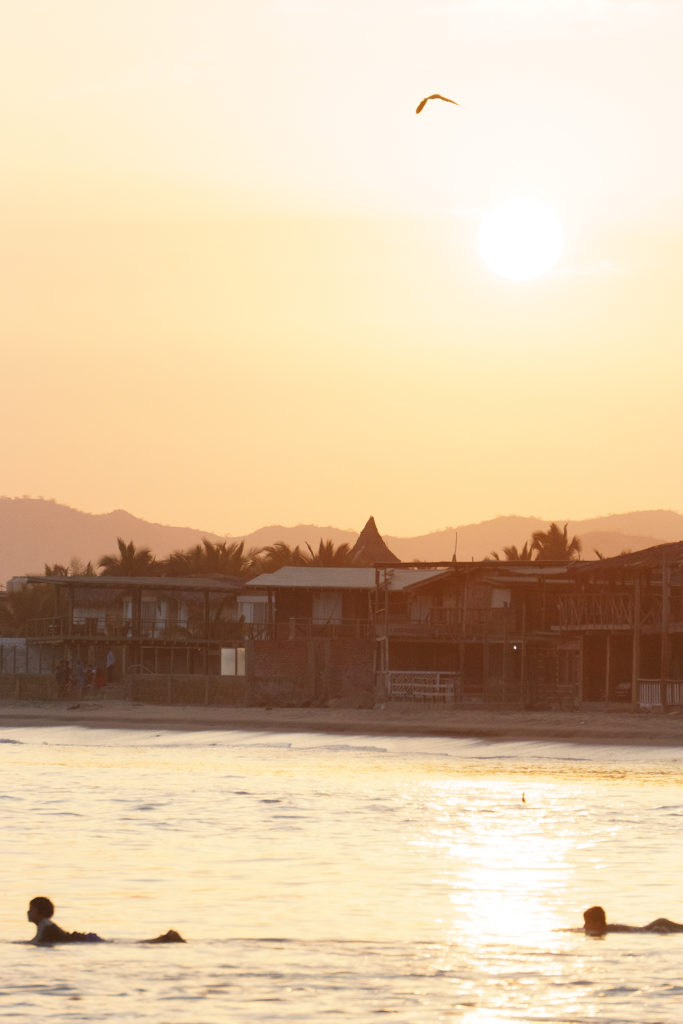
For surfers, the coastline near Trujillo offers many great waves, but two locations stand out from the rest. Take a local bus up the coast past Chan Chan and you’ll soon arrive at Huanchaco, a relaxed seaside resort town where locals and tourists mingle at seafront restaurants, eating arguably the best ceviche in Peru. Along the beach, the ribs of a giant, desiccated leviathan appear to be sticking up from the sand. These, in fact, are rows of caballitos de totora, locally made reed watercraft used by fishermen along the north coast of Peru for millennia.
According to some historians, caballitos de totora (“little reed horses”) are the world’s first known surfing vessels, a theory supported by characteristically naturalistic Moche ceramics—often in the form of spouted vases—depicting fishermen riding their craft in various positions. Then, as now, fishermen paddled out on their 12-foot-long caballitos. They hauled in their catch and then surfed their craft back to land, either standing, kneeling, or sitting. Whether this bears any connection to the rise of modern surfing is open to debate—but, along with Huanchaco’s excellent local surf breaks, it’s the reason why the town is a designated World Surfing Reserve.
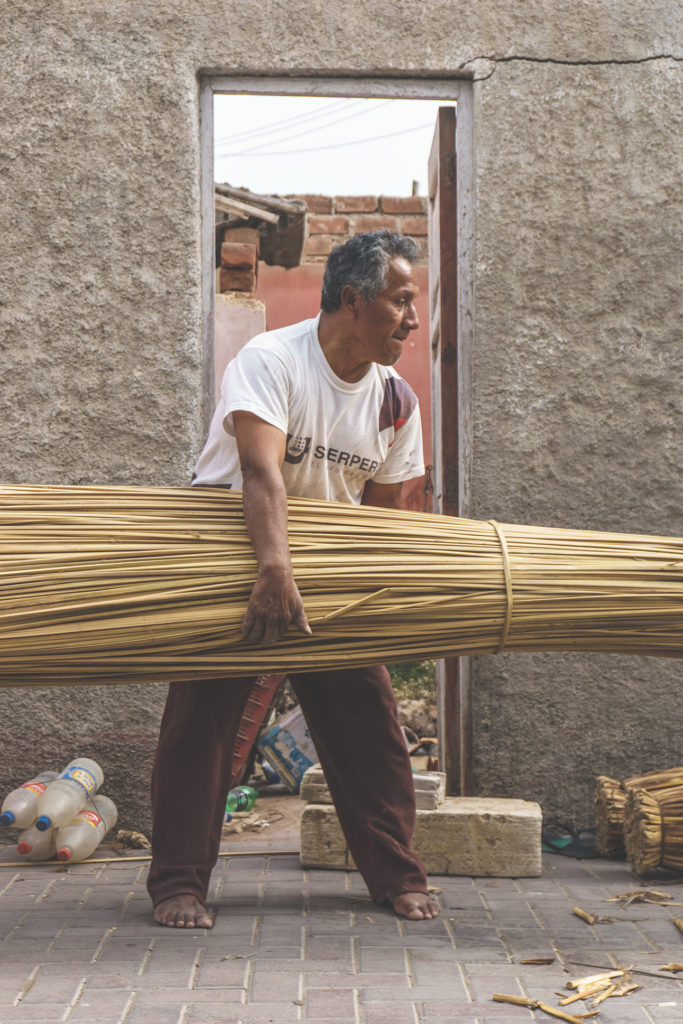
Forty or so miles up the coast from Trujillo is the tiny fishing village of Puerto Malabrigo, unofficially known as Puerto Chicama. Here begins the longest left-hand wave in the world. The Moche likely surfed here two millennia ago, but the wider world only became aware of Chicama in the 1960s, when Chuck Shipman, a surfer from Hawai‘i, spotted the 2.5-mile wave from the air and immediately reported it to his surfing friends in Lima. Divided into five sections, surfers normally have to catch multiple waves to make it the entire distance. But on a good day, a perfect wave at Chicama can last for four minutes.
Máncora and Cabo Blanco
Traffic rumbles along the Pan-American Highway as it pushes further north into the Piura region of Peru, just a few degrees south of the equator and not far from the border with Ecuador. The highway runs right through one of the region’s most popular destinations among backpackers and surfers: the beach resort town of Máncora. Máncora is a party town and a popular surf spot. So popular, in fact, that the long, easy left point can become overcrowded during the summer, both with experienced locals and novices from Máncora’s handful of surf schools.
If the waves are too crowded in Máncora, numerous alternatives dot the coasts of Piura and Tumbes, including Los Organos, Punta Sal, Panic Point, and Lobitos. Then there’s Cabo Blanco, about 20 miles southwest of Máncora.
In the 1950s and ’60s, this previously sleepy fishing village became the place to be for big-game fishing. Hemingway stayed for more than a month at the once-famous Cabo Blanco Fishing Club, which also hosted Gregory Peck, John Wayne, Spencer Tracy, Marilyn Monroe, and more. Back then, the reputation of Cabo Blanco was enhanced by a world-record catch: a 1,560-pound marlin caught in 1953, which remains the largest marlin ever landed on rod and reel.
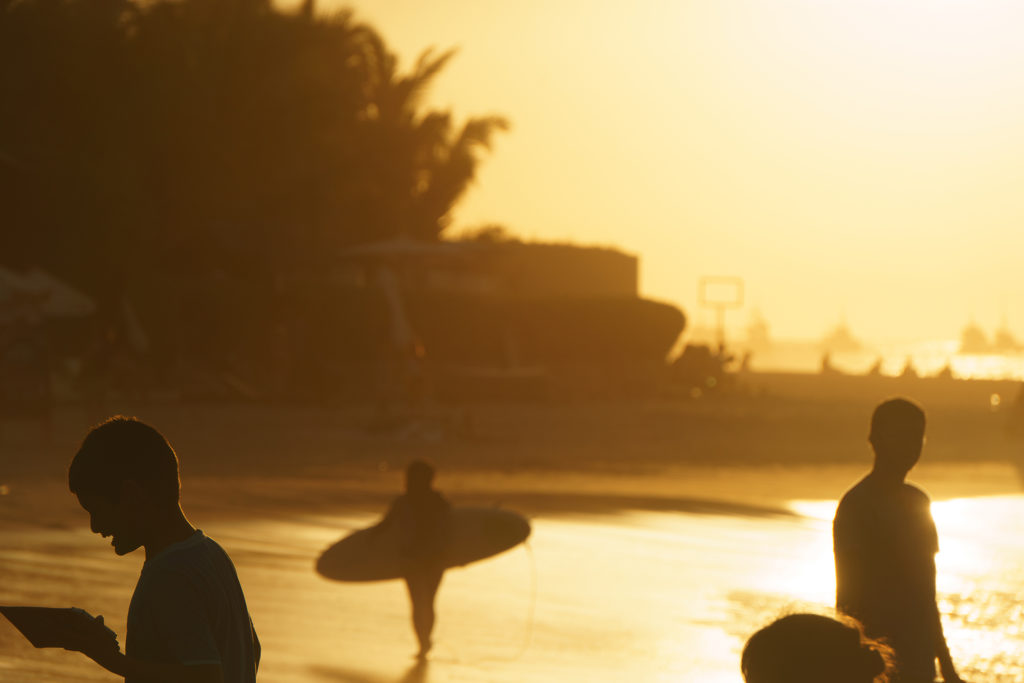
Today, Cabo Blanco sits in quiet, faded glory. The fishing is still good, but the village no longer attracts the jet set. But it does attract surfers. Cabo Blanco is home to the “Peruvian Pipeline,” a wave that inspires a level of fanaticism that draws in surfers from across the globe.
Sometimes compared to Hawai‘i’s Banzai Pipeline, it’s a heavy, fast left-hand barrel that ranks among the best waves in South America. On the downside, it doesn’t break often—but when it does, surfers flock to Cabo Blanco for a chance to ride one of Peru’s most epic waves.

